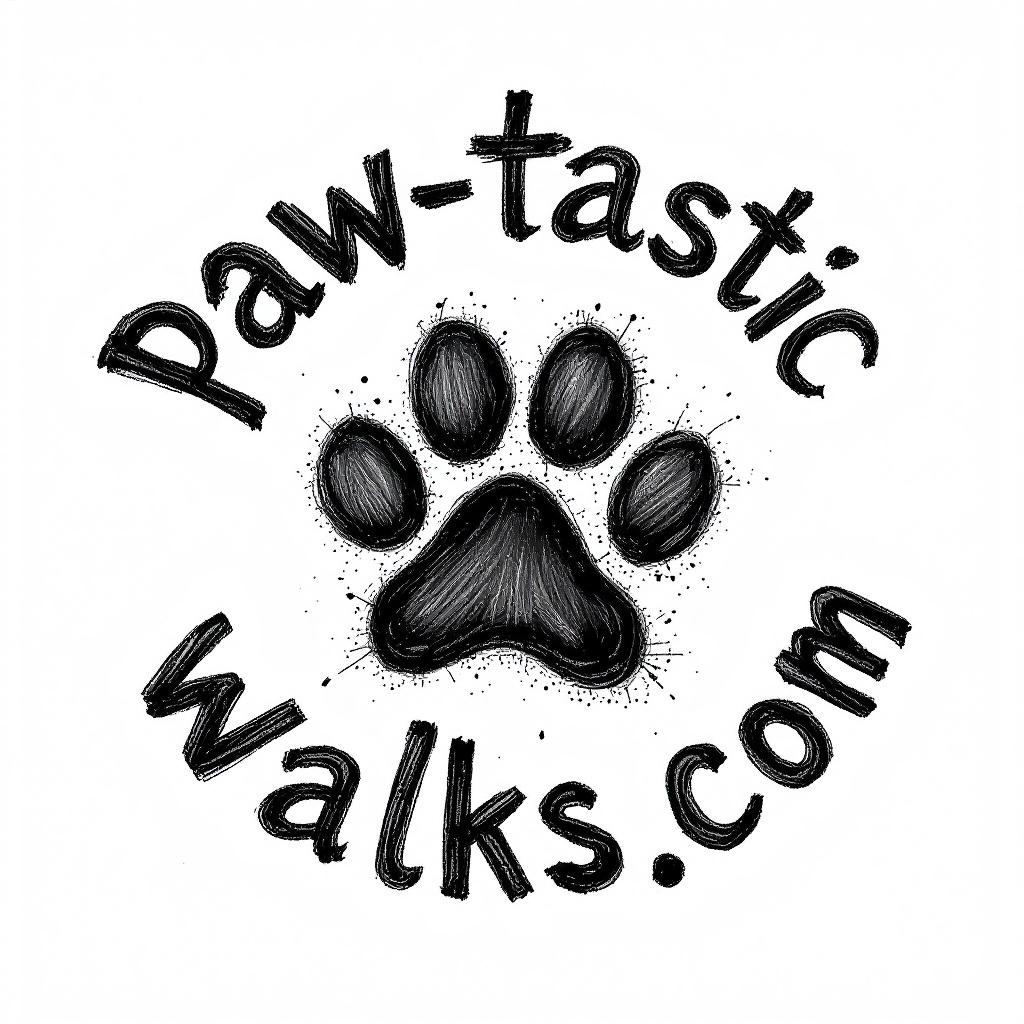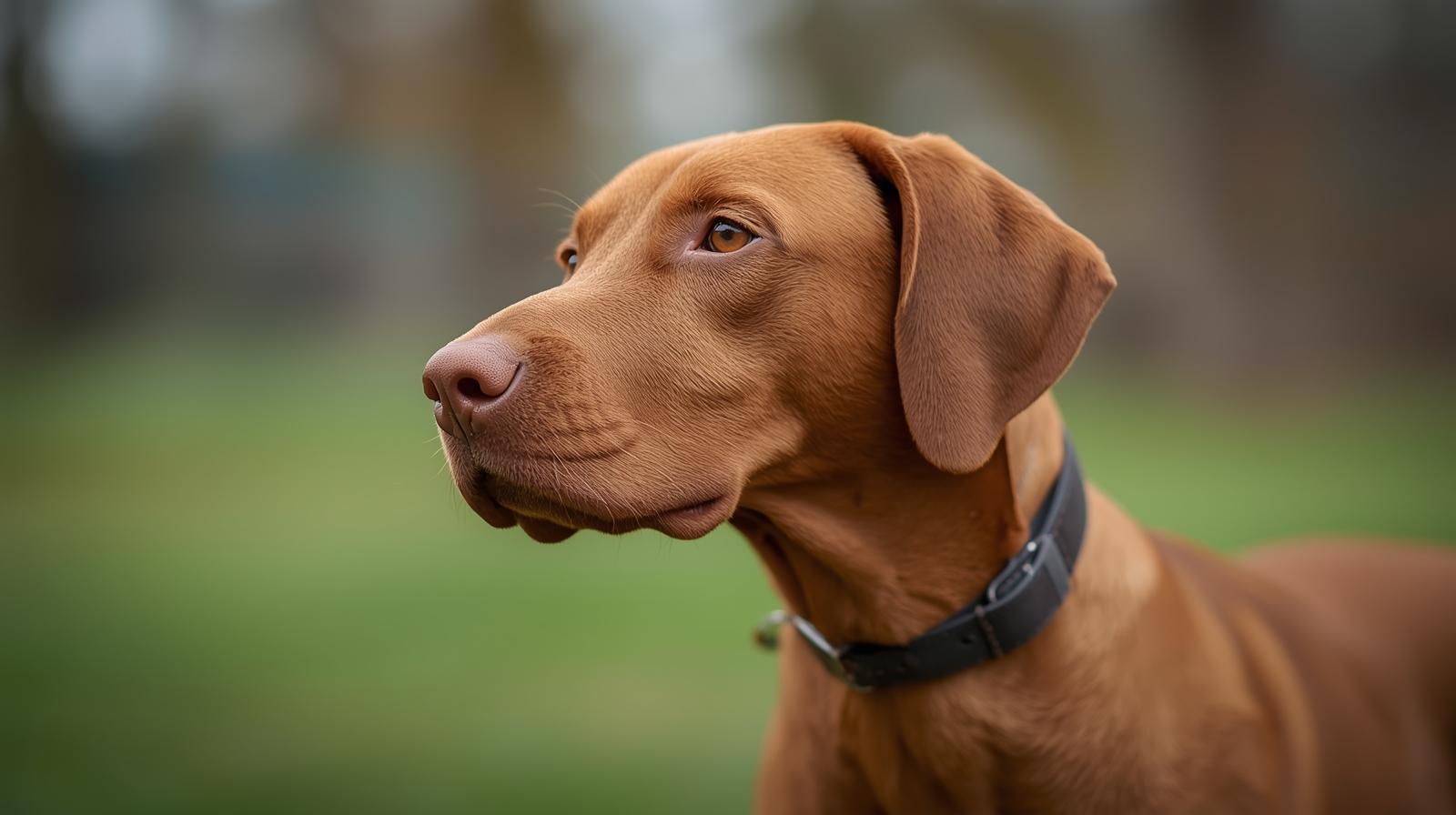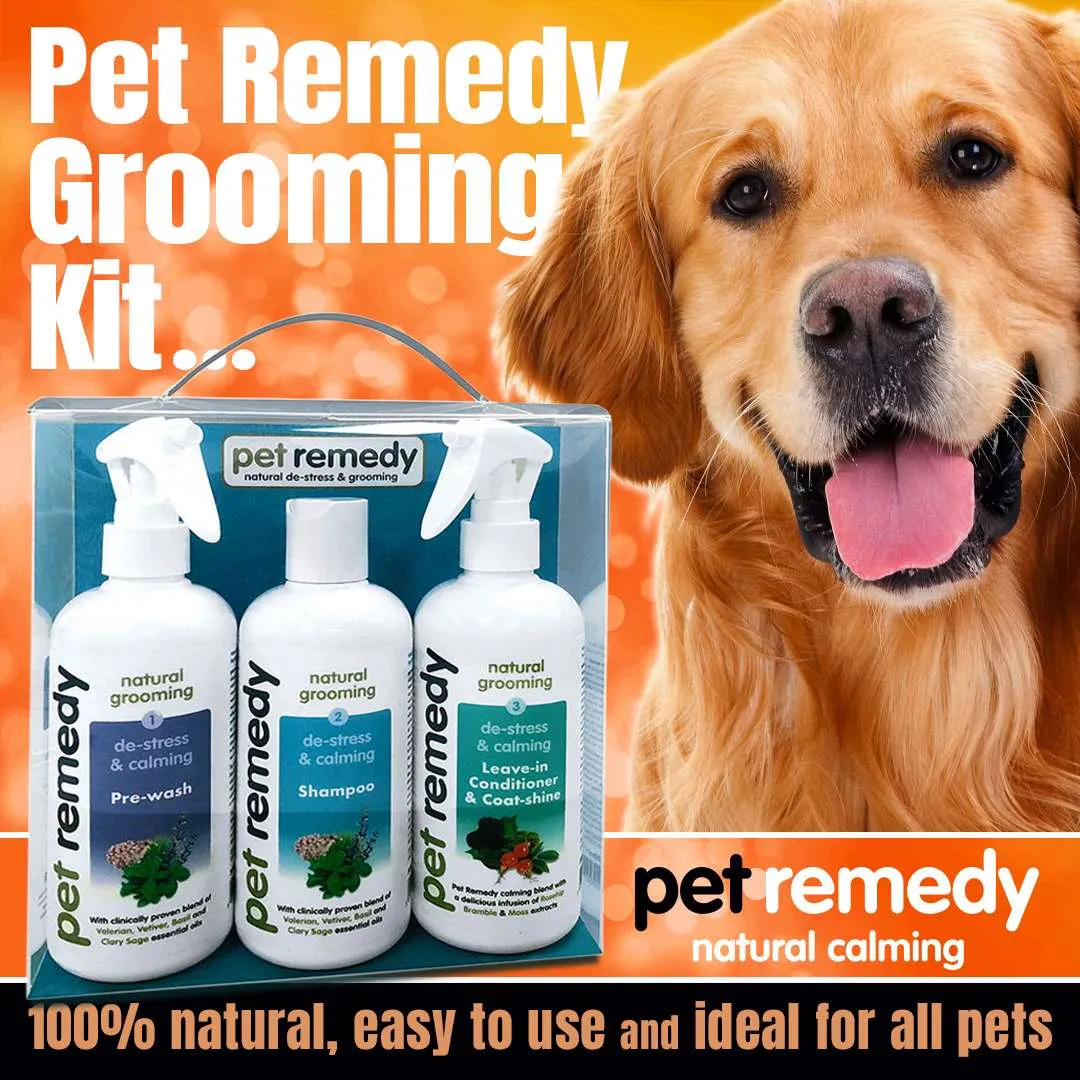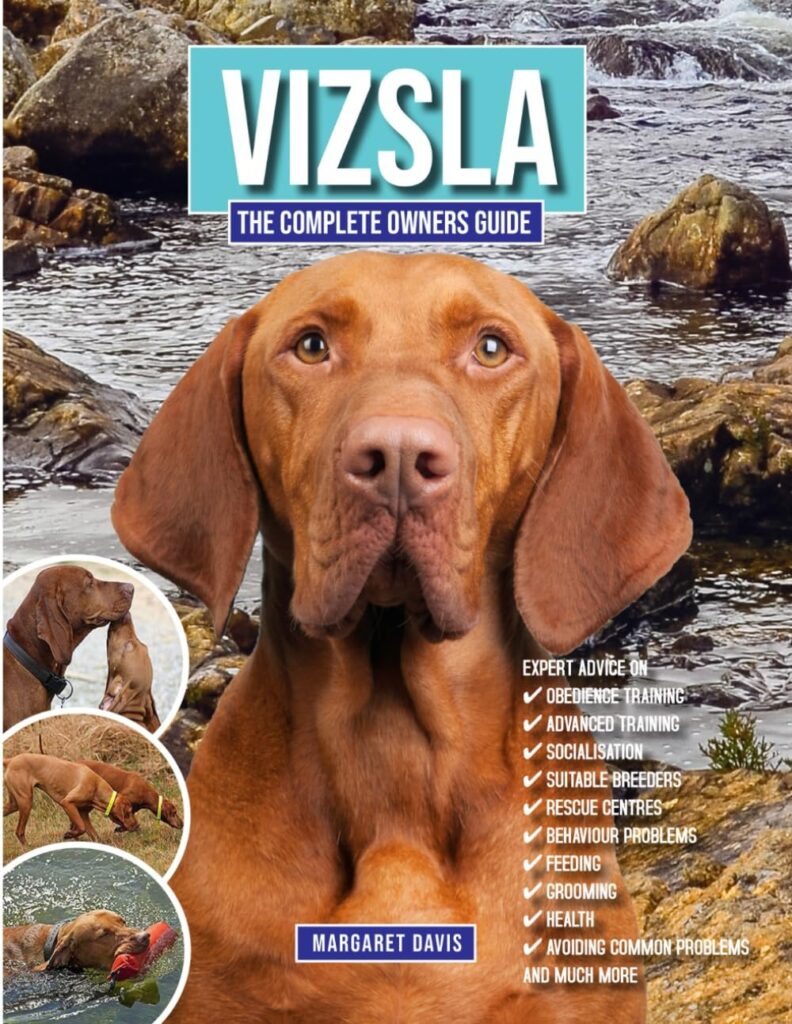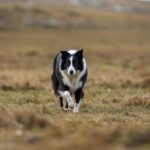Daily Exercise Guide
Walking Tips for Vizslas that keep pace with their energy. Get leash fit ideas, safe routes, mental breaks, and calm cooldowns. Happy walks start here.
Got a young rocket on four legs? Vizslas spring from Hungarian hunting roots, built for speed and stamina.
Their history explains the buzz in their paws, as the Vizsla thrives on purpose and movement.
Daily walks are not optional; they are health care. Plan 60 to 90 minutes of focused exercise to prevent boredom, barking, and weight gain.
Break it into brisk lead walks, safe off‑lead runs, and sniff breaks. You will see calmer evenings and better recall.
This guide shares simple, proven walking tips for life in East Cornwall. Think coastal paths, muddy lanes, changing weather, and busy villages.
You will get clear advice on gear, pacing, enrichment, and local dog walking services that fit real life.
New to the breed or short on time? A professional dog walker can keep your Vizsla happy with daily dog walks and smart training touches.
If you are comparing dog walking rates or searching for pet walking near me, start with professional Vizsla exercise walks near you.
It covers local dog walking, dog exercise services, and flexible options.
By the end, you will know how to pace sessions, choose routes, and keep training fun.
You will also know when a reliable dog walker is the right call for you and your Vizsla.
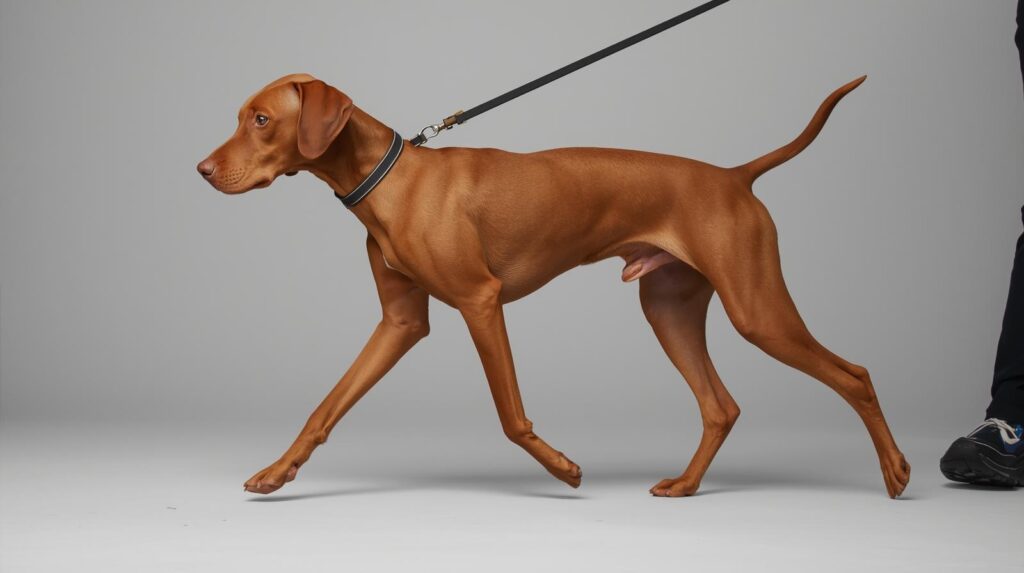
How Much Exercise Do Vizslas Really Need?
Vizslas are built to move. Most adults thrive on 60 to 90 minutes of purposeful exercise each day, split into two sessions.
That means brisk walking, safe off-lead running, and sniffing that actually tires the brain.
Many owners find that a mix of cardio and training keeps this sensitive breed calm and cuddly at home.
Puppies need less. A handy guide is the 5-minutes-per-month rule for structured walks, paired with gentle play and rest.
You can read a clear overview of this approach in the PitPat guide, How much exercise does a Hungarian Vizsla need? Adults with good fitness often enjoy more, especially if you add training games and scent work.
If you are less active, a professional dog walker can cover the miles and add structure.
Vizslas also crave company. Under-exercised or under-stimulated dogs can show stress, sometimes sliding into separation-related issues.
For background, see the overview on separation anxiety in dogs.
Regular, quality outings reduce that risk and help balance their mood.
Signs Your Vizsla Needs More Walks
Does your Vizsla ping around the house after a “walk”?
That is a clue. When exercise is not meeting their needs, you will often see everyday signals.
Common signs to watch:
- Hyper zoomies: Repeated sprints around the sofa or garden, even after a walk.
- Problem chewing: Table legs, shoes, or cushions on the hit list.
- Whining or pacing: Restless, needy behavior during the afternoon slump.
- Barking at nothing: Alert bark turns into boredom bark.
- Poor settle: Struggles to switch off in the evening.
- Grabby mouth or jumping: Extra nippy greetings at the door.
A light-hearted example many owners know: you have walked 30 minutes in drizzle, you hang the lead, and your Vizsla returns with a sock and a sparkle in the eye.
That sock says, “Round two, please.”
How regular walks with a professional dog walker help:
- Consistent routine: Daily dog walks at set times reduce fizz and worry.
- Right intensity: Brisk pacing, route variety, and training check-ins.
- Structured social time: Safe group walking builds manners and confidence.
- Local knowledge: Smart route choices, quiet fields, and safe recall spots.
Simple ways to monitor energy after walks:
- Track the post-walk settle time. A well-exercised Vizsla should nap within 20 to 40 minutes at home.
- Note the evening mood. Relaxed cuddles mean you hit the sweet spot. Ping-pong behavior means add ten more minutes of purpose, or swap to a hillier route.
- Use a quick sniff test. If your Vizsla insists on hunting the entire living room after a walk, add five minutes of nose games on the next outing.
- Keep a weekly log. Steps, distance, weather, and behavior notes. You will spot patterns fast.
For a breed perspective, the Vizsla Club of America stresses daily activity and owner involvement.
See the advice in Owning a Vizsla.
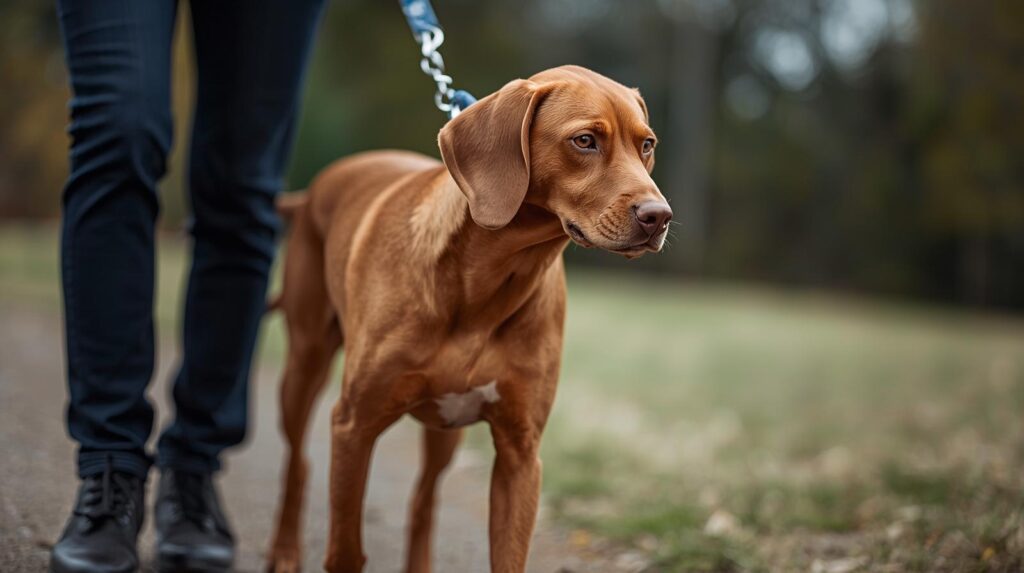
Balancing Walks with Mental Stimulation
Mileage alone is not enough. Vizslas are thinkers. Blend movement with brain work so your dog finishes satisfied, not wired.
Easy enrichment you can layer into walks:
- Scent stop signs: Pause at trees or walls and cue “find it.” Scatter three treats in short grass. Let the nose do the work.
- Direction changes: Switch left and right without warning. Ask for a sit before moving on. This engages focus and leash skills.
- Name the game: Label simple tasks like “up” for a stump or “around” for a post. Short reps, quick praise, keep it fun.
- Micro-recall drills: Call from a short distance, reward fast, release again. Sharpens response and burns energy.
Home activities that pair well with daily dog walks:
- Puzzle feeders: Slow eating, engage the brain, and reduce post-walk fuss.
- Fetch with rules: Ask for a sit before the throw, and a tidy handover at your feet.
- Nosework boxes: Hide a treat under one of three boxes; shuffle, then cue “find it.”
- Tug and trade: Short, fair games with clear start and finish. If your Vizsla loves a gripping game, try high-quality tug toys for a safe outlet.
Quick structure for a balanced session:
- 10 minutes brisk lead walk to warm up.
- 15 minutes off-lead or long-line recall games and sniffing.
- 5 minutes of simple obedience or trick reps.
- 5 minutes calm cooldown and loose-lead practice.
This blend suits busy days and rainy Cornish weather. On bigger days, extend the middle block, then keep the cooldown.
The result is a calmer, happier Vizsla that rests well and greets family politely.
If you are juggling schedules, a professional dog walker can run this plan for you.
Ask for route variety, recall work, and scent breaks. You will see better focus at home and fewer chewed socks on the floor.
Best Gear for Safe and Fun Vizsla Walks
Strong, athletic, and sensitive, Vizslas do best with gear that supports movement and safety.
Think no-pull control, freedom through the shoulders, and tough materials for Cornish trails.
Add smart extras like a GPS tracker and reflective trim for low light. The right setup makes daily dog walks calmer, kinder, and a lot more fun.
Choosing the Right Harness for Your Vizsla
A well-fitted harness protects your Vizsla’s neck and gives you steady control. For medium to large breeds that enjoy pace and power, a no-pull design helps stop towing without harsh corrections.
Front-clip harnesses steer the chest, not the throat, which reduces pulling and improves focus.
What matters most for Vizslas:
- Y-shaped chest, not a straight strap. This keeps shoulders free and supports a long stride.
- Two connection points. Use the front clip for training and the back clip for relaxed walks or running.
- Soft, durable padding. Look for belly and chest padding to reduce rub on short coats.
- Quick, secure buckles. You want easy on and off in car parks and on busy lanes.
Popular, field-tested options for active dogs:
- Ruffwear Front Range or Switchback. Padded, robust, and great for varied terrain.
- 2 Hounds Design Freedom No-Pull. Dual clip points and comfy velvet belly strap, often praised for training pulls. See this clear review format in the breed-focused guide, best harness for Vizsla dogs.
- Julius-K9 IDC or IDC Longwalk. Solid hardware with good visibility; pick the Longwalk for better shoulder movement.
- Perfect Fit Modular. Custom sizing for deep chests, handy for slim, athletic frames.
Fitting tips for comfort and control:
- Measure the girth behind the front legs. Check the brand’s size chart before buying.
- Aim for a snug fit. Two fingers under each strap is a good rule.
- Place the chest piece level with the breastbone. Avoid high straps that press on the throat.
- Check for rub points after a 30-minute walk. Look under the arms, behind the elbows, and along the sternum.
- Adjust for layers. You may need a small tweak for winter coats or wet-weather jackets.
Why no-pull helps on busy Cornish routes:
- You get steering control without yanking the neck.
- Your Vizsla keeps full shoulder range for hills and sand.
- Less pulling means easier group dog walks and safer road crossings.
- Sensitive dogs stay calmer because pressure is spread across the chest and ribs. For a straightforward overview of design types and safety, the dog harness article offers helpful context.
Quick checks before every outing:
- Inspect stitching and hardware. Replace if frayed or cracked.
- Test both clips. Carabiners should close cleanly with no gap.
- Do a wiggle test. If the harness shifts side to side, tighten a notch.
- Clip to the front ring for training or busy paths. Switch to the back clip for relaxed miles.
Helpful reads and local support:
- For a deeper look at sizing and features, see this durable dog harness guide for active Vizslas: https://paw-tastic-walks.com/best-dog-harness-for-large-dogs/.
- Want extra peace of mind on moorland or coastal tracks? A tracker pairs well with any harness. Check out practical advice on using a Tractive GPS dog tracker.
How a reliable dog walker can help:
- A professional dog walker will fit and test the harness before setting off.
- They will use the front clip for no-pull training, then switch to the back for steady pacing.
- They log rubbing, adjust straps, and recommend gear upgrades when needed.
- They keep sessions smooth with route planning, recall breaks, and kind handling, which suits Vizslas perfectly.
If you often search pet walking near me, ask about gear checks and handling style during your first call.
Good harness use lowers risk, improves recall, and makes daily dog walks more enjoyable for both of you.
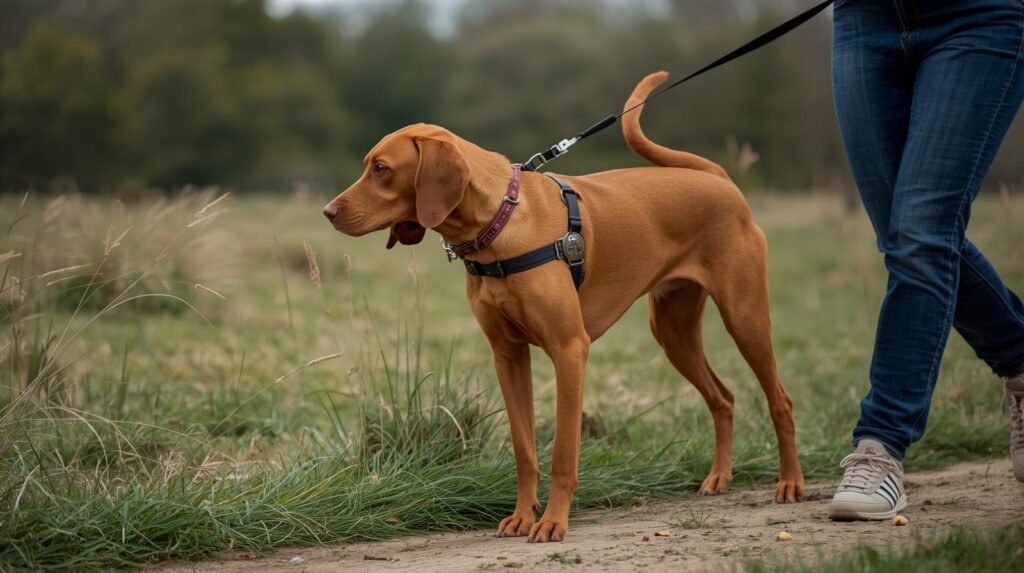
Training Your Vizsla to Walk Nicely on a Leash
Vizslas are quick thinkers with springy legs. That mix can turn a calm stroll into a ski pull if you let it.
With kind handling and steady practice, you can shape easy, loose-lead walks, even in busy East Cornwall spots.
The goal is simple: reward focus, prevent pulling from “working,” and keep sessions short, fun, and repeatable.
Handling Pulling and Distractions During Walks
Start with a comfy front-clip harness and a standard 1.8 to 2 meter lead. Hold the leash with two hands for better steering.
Keep treats small and soft, but use them sparingly so your Vizsla works for both access to the environment and your praise.
Practical techniques that work fast:
- Turn-around rule: The moment your Vizsla tightens the lead, say “this way” and turn 180 degrees. Move three to five steps, then relax the lead. Loose lead brings forward motion again. Pulling never gets the prize.
- Stop-go game: Freeze when the lead tightens. Wait for slack, mark with “yes,” then stride on. Forward motion is the reward.
- Find-it scatter: If your dog locks onto gulls or joggers, toss three treats into short grass and cue “find it.” Nose work resets the brain and lowers arousal.
- Three-step check-in: Take three steps, then ask for a sit or look. Reward, then release to walk. Repeat every 20 to 30 meters on busy paths.
- Engage-disengage: Spot the distraction. When your Vizsla glances at it, then looks back at you, mark and pay. Increase distance if the dog cannot look back within two seconds.
Use the place, pace, and distance to your advantage. On the South West Coast Path, give more space on narrow sections and practice check-ins between viewpoints.
On breezy beaches like Whitsand Bay or Seaton, train at low tide and start far from the waterline where gulls and surfers feel less exciting.
Quick plan for East Cornwall routes:
- Quiet lanes or Tamar Valley trails: Practice turn-arounds and stop-go in low traffic.
- Coastal paths: Work short reps of “look” and “heel” between waypoints. Keep sessions under 10 minutes, then let your Vizsla sniff as a break.
- Beaches: Use a long line for safety. Practice recall and loose-lead at the edges, then reward with a short off-lead sprint if allowed.
Helpful handling tips:
- Keep treats in your lead hand for fast delivery at your thigh.
- Use calm, brief praise. Excited chatter can ramp energy.
- Start sessions after a quick sniff break so your dog is not bursting.
- If another dog rushes you, step aside and create space. Read this guide on dealing with loose aggressive dogs on walks for safety steps you can use anywhere.
Positive reinforcement is not only friendly, it is proven.
You are rewarding behaviors you want and reducing what you do not want by making it unproductive.
For a simple overview of how this learning works, see operant conditioning.
Example you can try today:
- Walk the seawall at Downderry for five minutes using the stop-go game.
- When you reach a quiet bench, ask for a sit, feed two treats, then release to sniff for 30 seconds.
- Repeat the pattern back to the car. You should see fewer yanks and more check-ins.
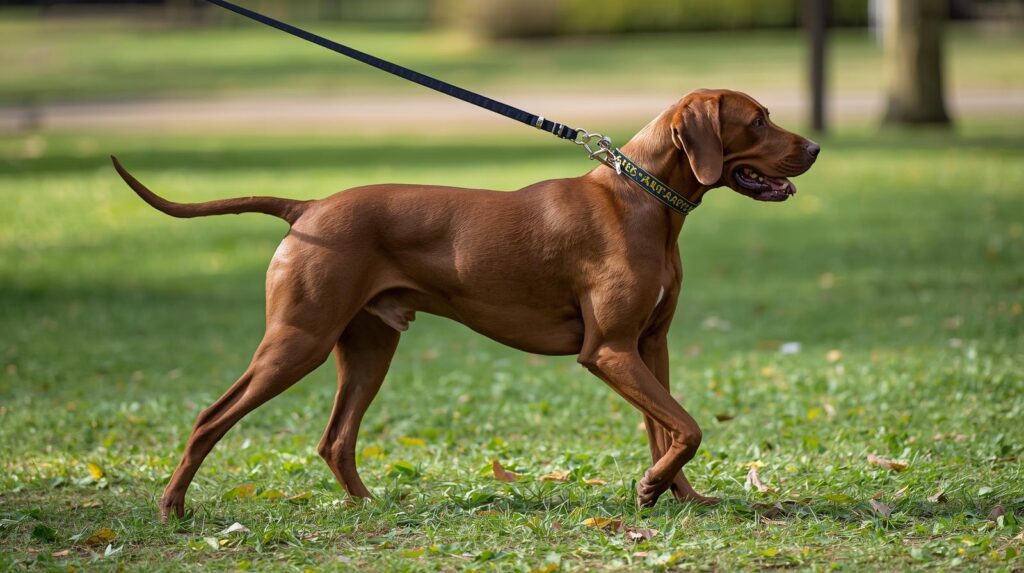
When to Seek a Professional Dog Walker
Busy week? A professional dog walker keeps your Vizsla’s routine on track.
Consistent miles plus training touchpoints lead to calmer evenings and smoother leash skills.
This support is handy for puppies, teens, and high-drive adults who need structure during your work hours.
Why hiring helps:
- Consistent exercise: Daily dog walks at a steady pace prevent the “Friday fizz.”
- Focused training: Loose-lead practice in real settings, not just your street.
- Route variety: Coast, woods, and village paths for mental stimulation.
- Social confidence: Well-run group dog walks build manners and recall around friendly dogs.
When it makes sense to book:
- Your schedule changes often and walks get skipped.
- Pulling has become a habit and you need expert help to reset it.
- You want safe coastline sessions with recall training on a long line.
- Your Vizsla needs puppy walking services to learn good habits early.
What to ask before you book:
- Dog walking rates and what they include, such as training reps or solo time.
- Handling style and safety protocols for beaches, roads, and livestock.
- Experience with sensitive breeds like Vizslas that need kind guidance.
- Availability for group dog walks and small, compatible groups.
If you need a reliable dog walker who understands training as part of the walk, reach out for local dog walking support.
Book a chat or request availability through Contact Paw-tastic Walks.
It is a friendly way to set a plan that fits your schedule and your dog’s needs, whether you search pet walking near me, prefer solo sessions, or want a spot in a small group.
Extra peace of mind:
- Ask how they handle poor weather. Cornwall gets sudden showers, and these tips on walking your dog in the rain keep outings safe and productive.
- Confirm recall tools and ID backups, like tags and GPS. If you walk near cliffs or moor edges, a tracker pairs well with training.
A strong partnership between you and your walker delivers real results. With regular, kind practice, your Vizsla learns that walking near you brings freedom and fun.
That is the habit you want for life.
A great book available on Amazon…check it out!
Fun Walking Ideas and Local Spots for Vizslas in East Cornwall
East Cornwall is a playground for energetic dogs. Vizslas thrive on space, variety, and scent.
Mix coast, woods, and easy loops to match the weather and your schedule.
Below are local ideas you can use right away, plus simple walking games that keep brains busy and legs happy.
Coastal classics with space to stride
The coast offers long lines of sight and steady wind, great for a driven nose.
Use quieter access points and work recall between viewpoints.
- Rame Peninsula and Mount Edgcumbe: Undulating paths, wide views, and sheltered woodland breaks. Follow waymarked trails and reward check-ins at each fork. For background on the route network, see the overview of the South West Coast Path.
- Whitsand Bay and Tregonhawke: Broad sands at lower tides help with long-line recall. Practice sit-stays while you pick a shell, then release to run.
- Downderry to Seaton seawall: A steady, paved stretch that suits loose-lead practice before a beach sniff.
Coastal tips that keep walks smooth:
- Check tides and seasonal beach rules before you go.
- Use a long line near cliffs or busy surf.
- Add micro-drills. Ask for a look, a touch, and a short heel between viewpoints.
Wooded and riverside walks for scent and shade
Woods give natural cover, cooler air, and a rich scent. Perfect for a thoughtful Vizsla that loves to track.
- Golitha Falls, Draynes Wood: Short, rooty paths along the River Fowey. Work slow sniffing, then a tidy heel on the way back.
- Cotehele Woods and the Tamar: Mix terrace paths with riverside loops. Pick a landmark to cue recall practice every 100 meters.
- Kit Hill Country Park: Gentle climbs and open heath for wind and scent puzzles. Practice down-stays on granite benches.
Want a handy list of nearby trails?
This local round-up of top dog walks in South East Cornwall covers rivers, woods, and quiet paths with parking notes.
Easy loops and lakes for recall practice
Flat circuits help you track distance and build rhythm.
They suit puppies, seniors, and rest days, while still tiring the mind.
- Siblyback Lake: A broad loop with firm footing and water views. Ideal for long-line recall and relaxed check-ins.
- Lanhydrock parkland: Waymarked trails and cafe stops. Use benches as “training islands” for sit, look, and release.
- Seaton Valley Country Park: Shaded path with gentle gradients. Try scent scatters at waypoints, then walk on.
For more inspiration across the county, browse this guide to Cornwall dog walks.
Pick options in the east for shorter drives.
Fun walking games you can use anywhere
Layer one or two games into every outing. You will burn energy without marching for hours.
- Sniffari bingo: Pick five scents to “find” on your route, like seaweed, pine, or heather. Pay each find with a tiny treat.
- Recall relay: Take turns calling your Vizsla between two people across a safe field. Keep reps short and fast.
- Hunt the pinecone: Show the cone, toss into short grass, then cue “find it.” Add a sit before each new throw.
- Marker sprints: Jog to a clear landmark, cue a sit, then release to sniff for 20 seconds. Repeat three times.
- Tug and trade: A few rounds of controlled play can reset focus. If your dog loves a gripping game, try quality tug toys and practice a clean swap.
Quick rules for game time:
- Keep reps short. Stop while your Vizsla still wants more.
- Mix calm with action. Pair sprints with slow sniff breaks.
- Use tiny treats so the walk stays the main reward.
Quiet-route picks for sensitive Vizslas
Some days call for calm paths and fewer surprises. Choose wider trails, earlier starts, and steady routines.
- Early mornings at lakes or parks reduce dog traffic.
- Woodland terraces at Cotehele offer space to step aside and regroup.
- Avoid narrow cliff sections on windy days.
For thoughtful planning and route ideas, explore these calming walks for anxious dogs in East Cornwall:
https://paw-tastic-walks.com/anxiety-treatment-for-dogs/.
You will find practical steps that help sensitive dogs relax on walks.
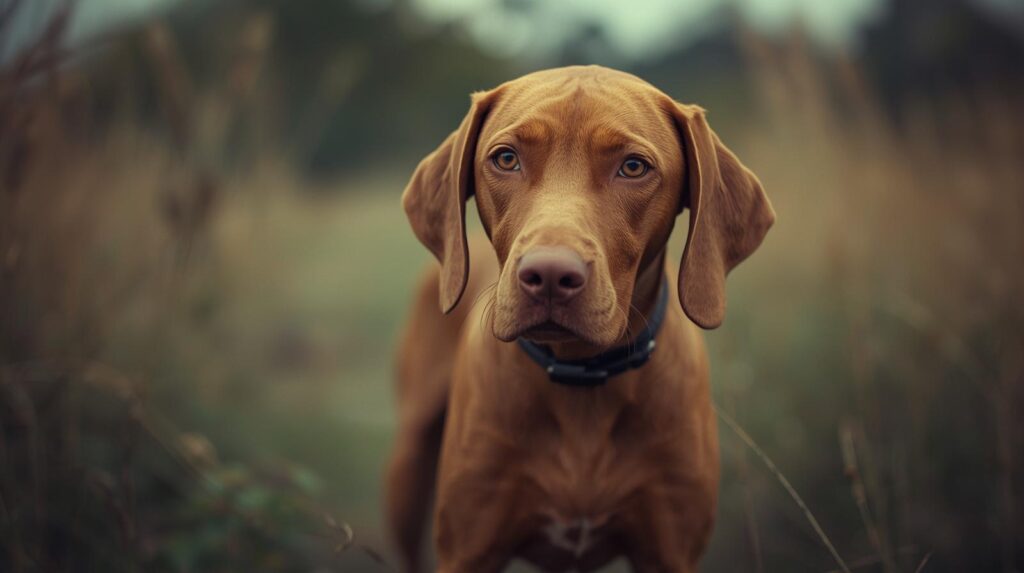
Sample mini-itineraries you can copy
Here are simple plans you can run this week. Adjust pacing and distance to your Vizsla’s fitness.
- 30-minute coast tune-up
- 10 minutes brisk lead walk along a seawall
- 10 minutes long-line recall on sand
- 10 minutes cool down with three check-in drills
- 45-minute woods and focus
- 15 minutes easy trail to warm up
- 15 minutes scent work with two “find it” scatters
- 15 minutes loose-lead back to the car, paying calm walking
- 60-minute lake loop day
- Full circuit at Siblyback or similar
- Add five recall reps at the half-way point
- Finish with a two-minute settle on a bench
Quick-reference spot guide
Use this at a glance to match the day with the right route.
| Spot | Terrain | Parking | Off-lead potential |
|---|---|---|---|
| Rame Peninsula | Mixed coast and woods | Multiple car parks | Good in fields and wider paths |
| Siblyback Lake | Flat, firm path | Main car park | Strong for long-line practice |
| Golitha Falls | Rooty riverside | Roadside and small lots | Best on lead near water |
| Kit Hill | Open heath and granite | Summit car park | Good sight lines for recall |
A few final pointers:
- Pack water, a towel, and a spare lead.
- Use a front-clip harness on busy paths.
- Check weather quickly. If heavy rain hits, these tips on walking your dog in the rain help you keep sessions safe and fun.
Looking for extra help on busy weeks?
Search pet walking near me and compare dog walking rates, then book a professional dog walker who knows these routes.
The right support keeps daily dog walks consistent, adds training reps, and gives Vizslas the freedom they crave with structure you can trust.
Available on our Pawtastic Apparel Store and much, much more!
Conclusion
Vizslas shine when their needs are met with purpose and routine. Give them daily dog walks that balance pace, sniffing, and short training.
Use comfortable, well-fitted gear, and keep leash skills sharp with simple, repeatable games.
Mix coast, woods, and quiet loops across East Cornwall to satisfy both body and brain.
Healthy walks support weight, joints, mood, and sleep, which keeps the whole household happier.
For background on the benefits of regular outings, see the overview of dog walking.
Ready for support on busy weeks? Book local dog walking services with a professional dog walker who understands high-energy breeds, offers group dog walks, and builds recall kindly.
If you are comparing dog walking rates or searching pet walking near me, our updated dog walking price list makes it easy to choose the right plan.
Want steady progress for a youngster? Puppy walking services layer short, thoughtful sessions with positive habits that last.
Reliable dog walker partnerships turn good days into great ones by keeping dog exercise services consistent and safe.
Your Vizsla loves a job, a rhythm, and time with you. Keep walks clear and fun, look ahead to new routes, and enjoy the easy calm that follows.
